Urban interior design comes from the style of city living. It uses industrial and modern touches to create great spaces that work well. It’s perfect for city people who want a stylish and practical home.
What is Urban Interior Design?
Urban interior design focuses on making the most of small spaces. It often features raw materials like brick, metal, and concrete, giving homes a relaxed, industrial vibe. It’s a blend of modern and practical design.
Key Elements of Urban Interior Design
Raw Brickwork and Industrial Products
Urban homes commonly have exposed brick walls, metal beams, and concrete floors.
Natural Light
Full-height windows give the impression of more open space, allowing daylight to fill the rooms.
Open Spaces
Urban homes also tend to be more open concept, with fewer walls partitioning areas of the house. So, it gives the illusion of a bigger space.
Minimalist Look
Urban design direction is very much a “less is more” approach. It means less furniture and decor, minimizing the clutter and giving it a modern appearance.
Optimizing Small Spaces in Urban Interiors
If you live in a city, chances are that your apartment is small, so knowing how to take advantage of all available space is crucial.
Space-Saving Furniture
Urban homes sometimes have more than one function, as does the furniture. For example, a bed could become a sofa, or you could have storage space underneath the table.
Multi-Functional Spaces
In a metropolitan home, one room may need to serve multiple functions. Your living room may also serve as a dining room or home office.
It goes nicely with multi-functional furniture, such as a fold-out desk or dining table, that also serves as a work surface.
Storage Solutions
Urban design cleverly uses storage hacks, such as reaching shelves to the ceiling or organizing hidden areas underneath beds and couches.
Urban Interior Design Color Schemes
Urban interior design color is predominantly neutral, although there are many ways to revitalize the space.
- Neutral Tones: This includes colors such as grey, beige, and white, which are typical of urban interiors.
- Monochromatic Palettes: Playing with tones of the same color could feel fresh and modern. Combining light grey walls and dark grey furniture can unite the room.
- Earth tones: Natural colors such as brown and green can be incorporated to mitigate the hard edges of urban design.
Industrial and Modern Mixing
It combines industrial and modern, combining rough materials with smooth finishes.
Raw Industrial Features
The industrial look includes exposed pipes, concrete floors, and metal accents.
Modern Finishes
Urban Interiors often pair the rawness of industrial materials with contrasting modern nuances such as smooth tops, glass tabl,e s, and polished metal furniture.
Mixing Textures
Make it interesting. An excellent urban design also mixes textures like metal, wood, glass, s and other surfaces.
A metal coffee table, for instance, works with a soft leather sofa but works right between a reclaimed wood dining table.
Integration of Nature in Urban Design
Though contemporary and industrial characterize much urban design, introducing natural features can help create warmer spaces.
Wood and stone: these natural materials contrast with metal and concrete.
Indoor plants: Plants are an easy way to give life and freshness to urban spaces.
Sustainable Materials: Choose environmentally friendly materials such as reclaimed wood or recycled metal to look stylish and help the environment.
How to Pick Furniture for Urban Spots
Urban furniture should be contemporary, streamlined, and functional.
- Modular Furniture: Sofas and tables that can be easily rearranged are ideal for small spaces.
- Low Furniture: It is a low one like the sofa that gives your rooms an illusion of height and makes them look spacious.
- Less furniture: Use simple and clean-lined modern furniture designs to convey your message of a sleek or urban area.
Lighting in the context of urban interior design
Urban Areas Need Good Light Quality
- And windows are generally significant, which means plenty of natural light for an open and bright room.
- Industrial Lighting: The industrial vibe continues with bare bulbs and metallic overhead lighting.
- Ambient lighting: The floor lamps/hanging light provide warm and soft light in essential places to make your house homely and cozy.
Art and Décor in Urban Interiors
Decorating Urban Interiors – One should maintain simplicity yet keep it far-reaching.
- Minimalist Art: Design Uses Abstract or Geometric Art
- Statement Pieces: Urban spaces might contain one or two statement pieces, such as a bold piece of art or a massive mirror.
- Metal Sculptures: Metal art and sculptures are great companions to the industrial elements of an urban interior.
Urban Interior Design: Challenges
They say designing an urban home can be challenging; however, there are solutions.
Spatial Constraints
Small spaces are one of the critical drivers of issues in urban design.
Budget Restrictions
Another area for improvement is staying within a budget. Urban design is not all about expensive materials; you can create the same look and feel using economical materials such as brick, recycled wood, or second-hand furniture.
Insufficient sunlight
City apartments need more natural light. To counteract this, utilize mirrors and light-colored furniture to help reflect more light within the room, using sheer curtains instead of heavier drapes to maximize your available light.
10 Urban Interior Design Ideas
- Exposed Brick Walls: Protect brick walls for an organic, industrial vibe that lends warmth to any space.
- Open Shelves: You can display decor using metal or wood shelves while keeping the space more functional.
- Spacious Airy Windows: The bigger the windows, the more fresh air and natural light enters the home, making the rooms airy and bright.
- Industrial Lighting: Use metal fixtures or exposed bulbs to create an industrial feel.
- Concrete Floors: For a stylish, contemporary touch, opt for smooth concrete floors that reflect the light beautifully.
- Simple Furniture: Use furniture that has clean lines and minimal elements to make the room feel clutter-free.
- Metal Details: Incorporate metal frames in furniture, mirrors, or artwork for a more industrial feel.
- Rugs as a Statement: A warm rug that is bold or has a neutral pattern
- Plants: Bring some small plants or even big indoor trees to bring nature and soften the space.
- Reclaimed Wood Furniture: Lay reclaimed wood tables or chairs store conserving nature.
- Modular Furniture: Opt for versatile furniture such as modular couches that adapt to compact living rooms.
- Art Displays: Hang oversized art pieces hung large and colorful to draw the eye to an area.
- Tall bookshelves: Use a vertical room with towering bookshelves.
- Loft Beds: You can also use loft-style beds to save space and have storage or seating underneath (more here).
- Glass Partition: Glass is a style that makes it an excellent concept to be just in place while maintaining a vibrant area.
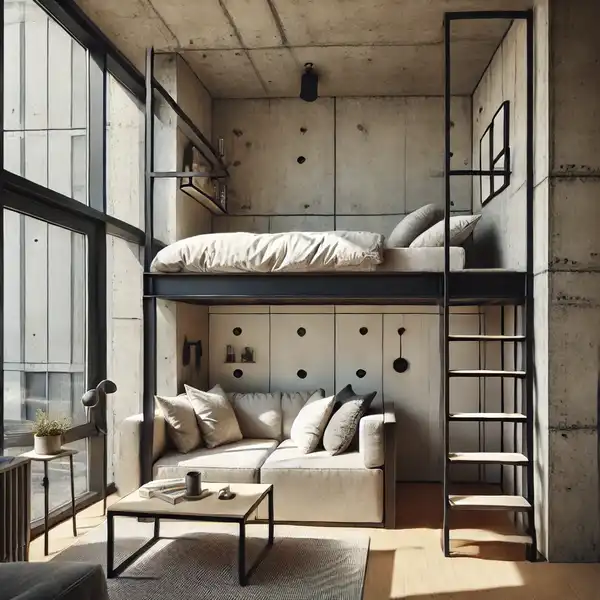
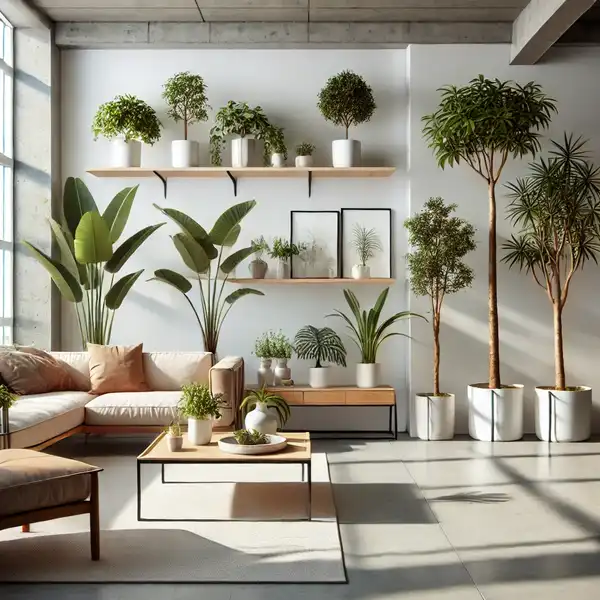
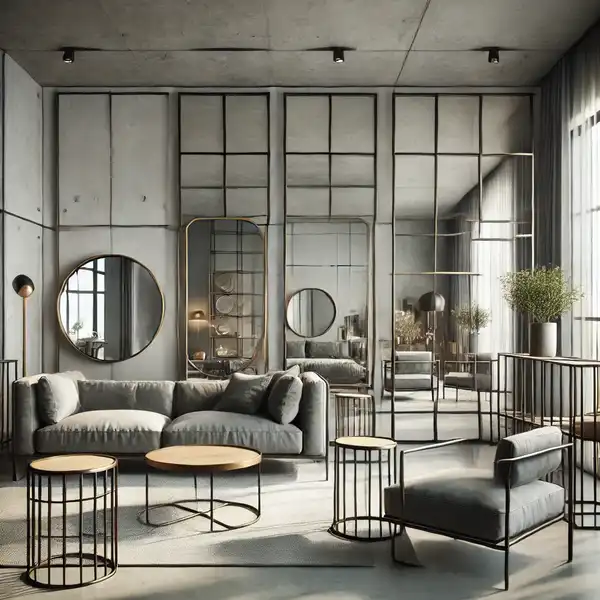
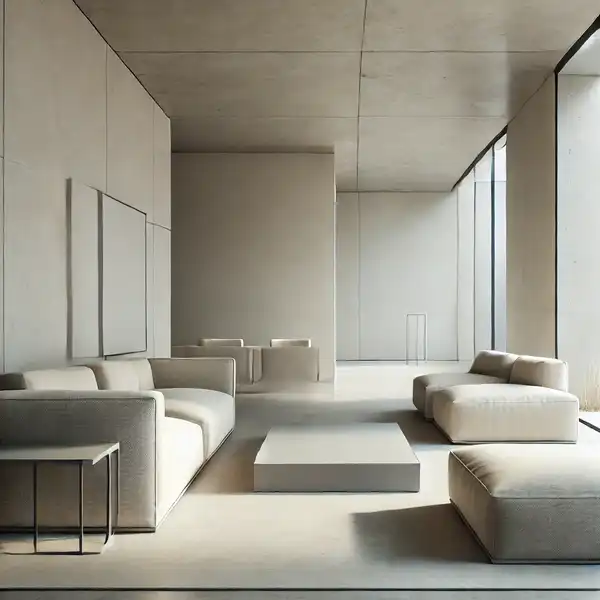
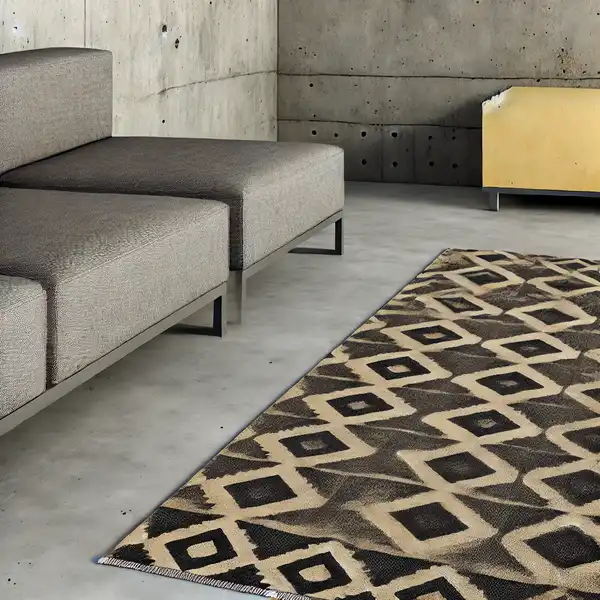

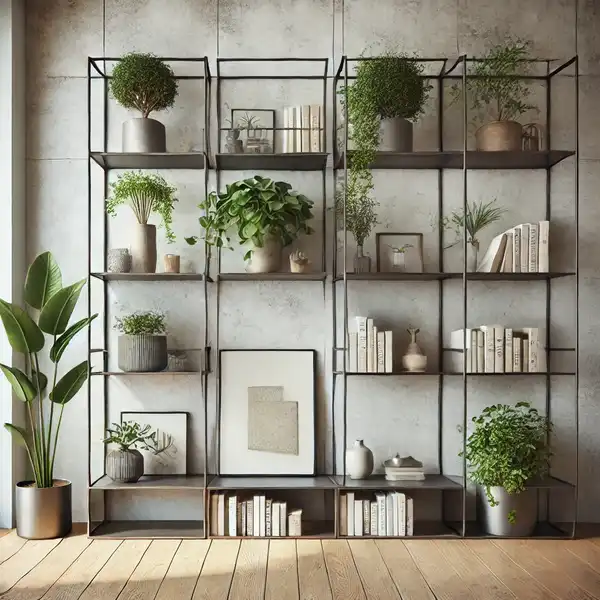
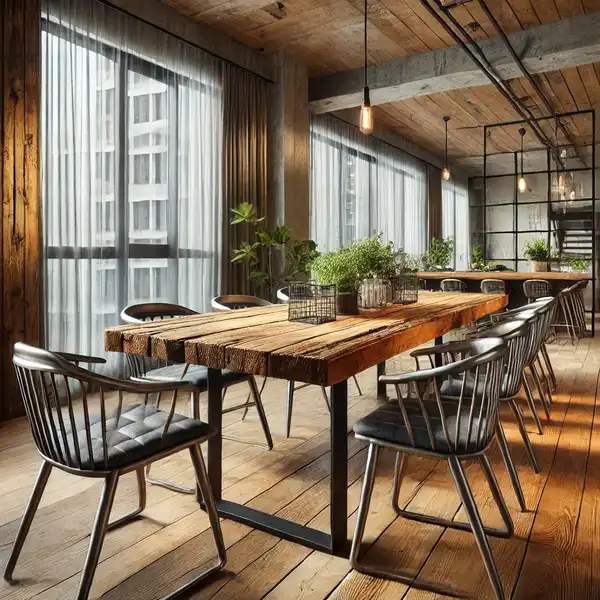
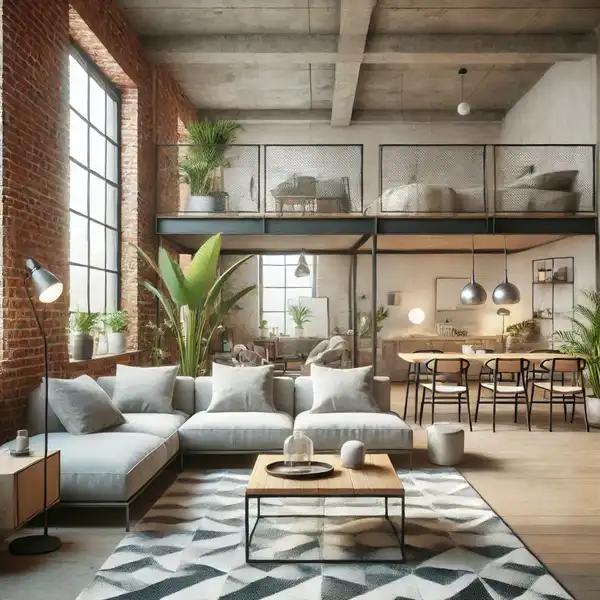
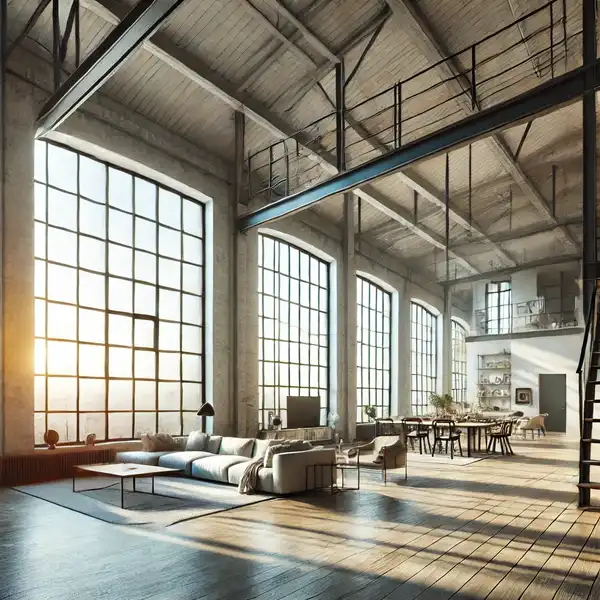
Urban interior design involves combining industrial, modern, and minimalist elements to create a stylish and functional home.
With a bit of creativity, anyone can turn their home into an urban oasis that reflects the energy and style of city living.